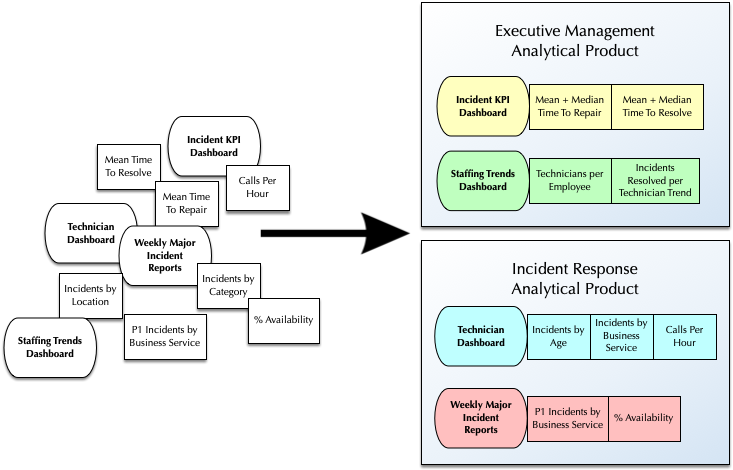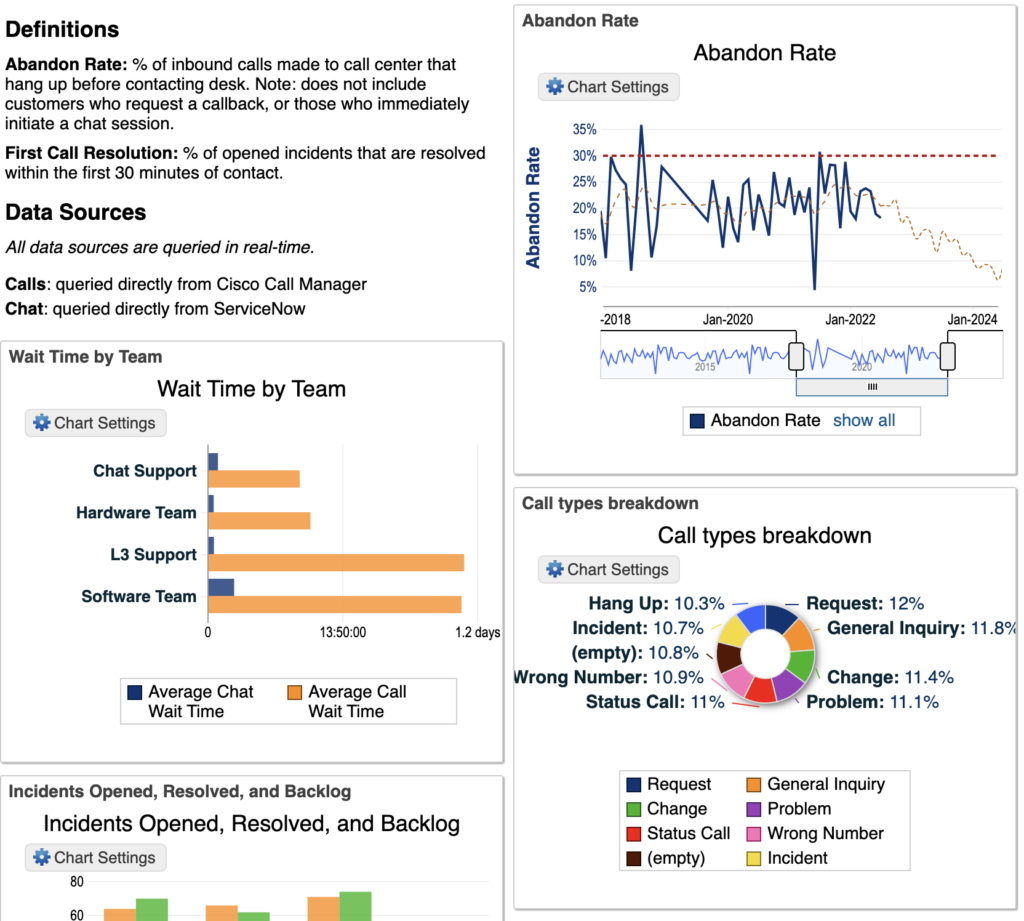Service providers are called upon to meet rapidly evolving customer challenges. Delivering quality service requires a toolbox full of flexible, agile tools to meet every new requirement.
For analytics requirements, you need Explore Analytics in your toolbox to ensure you deliver reports and dashboards that empower your customers and uncover the insights they need.
Why? Because Explore Analytics is engineered to be:
- Flexible enough to tackle every reporting problem
- Simple enough to ensure you don’t wait for change requests, code changes, or data replication
- Agile enough to bridge every island of data
The Flexible Tool for Every Reporting Problem
Explore Analytics was designed from day one as a fully-featured business intelligence tool. As such, it is full of advanced features that can easily combine data across tables, apply formulas, and present vivid visualizations. With this comprehensive set of features, Explore Analytics is a get-out-of-jail free card for your most complicated reporting needs.
With Explore Analytics at your side, you can embrace your customer’s most ambitious reporting ideas. Instead of being limited to the same basic trends and category charts, you can create advanced real-time analytics that will transform your customer’s processes and delight their executives.
Insight Shouldn’t Wait – For Change Requests, Code, or Data Replication
Customers often ask for insights without knowing if the data is arranged to make such reports easy to build. For those who understand the structure of the data, it can be frustrating to have all the data you need yet be unable to produce the report simply because it is stored in the wrong format or across too many tables.
Many solutions begin with re-architecting the data until it fits the report you’re trying to create. This could include a combination of javascript code to reformat or copy data, administrative changes to tables or fields, or – worst of all – replicating the data out of ServiceNow to a place where you can spend more time and effort rearchitecting the database.
Instead of fitting your data to your reports, Explore Analytics access the data where it is and provides a suite of tools to allow you to meet your reporting needs without changing ServiceNow or removing data to another database. Any reformatting, formulas, or combinations across tables are done easily within the tool, using some configurable drop-downs.
That means you don’t need to wait for QA, code reviews, release cycles, or other cumbersome processes. You also don’t need to take on the risk that these changes will impact the functioning of ServiceNow or other platforms. Any business analyst can easily transform the data into insights without worrying about the impact to anyone else.
Bridge Every Island of Data to Every Audience
Explore Analytics is architected to connect quickly and easily to multiple sources of data. Without moving any of the data around, you can easily combine data from ServiceNow, call systems, data warehouses, or other adjacent platforms. Instead of silos of data, Explore Analytics allows you to provide insights based on your full context.
Once you’ve built those reports, Explore Analytics also lets you bring that data to audiences regardless of what tools they use. ServiceNow users can access Explore Analytics reports directly on their homepages, drilling through and acting immediately. On the other hand, executives who prefer reports delivered via email can get stand-alone interactive dashboards delivered to them, without requiring logging in to any tools. Meanwhile, your customers can present data in intranet portals, on public websites, in mobile apps – wherever they want their data to be accessed by the best audience.
Explore Analytics: Don’t Leave Home Without It
As a service provider, you want to have the right tools in your toolbox to ensure that you will meet and exceed any challenge your customers ask you to solve. With Explore Analytics, you have the comfort of knowing that you have an all-purpose reporting tool that will rise to meet your customer’s needs, no matter how complex.
By providing a flexible tool, not relying on code or administrative changes, and bridging islands of data together, Explore Analytics will turn your focus away from “how can I solve this?” to “how will I delight my customer next?”


